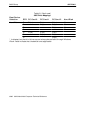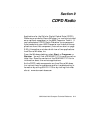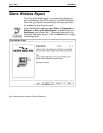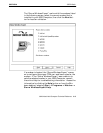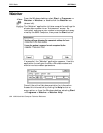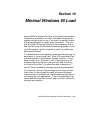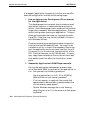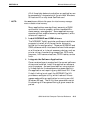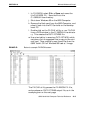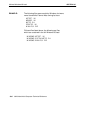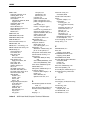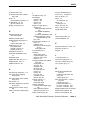
SECTION 10Minimal Windows 95 Load
10-4 6620 Hand-Held Computer Technical Reference
5. Using FILEMON and FILCHK.
The target application is installed or copied onto the
6620 Computer running a minimal Windows 95 load,
and the FILEMON utility monitors all unsuccessful
file access attempts when starting or running the ap-
plication. The FILCHK program then parses the out-
put of FILEMON, to create a list of possible missing
files. The 6620 minimal load flash card is then placed
in a PC Card slot on a desktop PC or laptop PC. Then
the missing files, specified in OUTLIST.W95, can be
manually copied from the full Windows 95 image on
the 6620 Toolkit CD.
Below is a step-by-step procedure for running
FILEMON to monitor an application on the 6620
Computer.
a. Image a Boot Card using the 6620 Toolkit.
b. Install and copy the target application to the mini-
mal load flash card.
c. Obtain the FILEMON utility from the Systems
Internals web site at:
http://www.sysinternals.com/filemon.htm
(it consists of two files: FILEMON.EXE and
FILEVXD.VXD).
d. Copy the FILEMON and FILEVXD files to the
\windows\desktop folder of the minimal load.
e. Remove the PC Card from the development PC,
place it in the 6620 Computer, and boot from it.
f. Once booted, start the FILEMON utility from the
desktop on the 6620 Computer (it will begin logging
right away).
g. Immediately start the target application, and con-
tinue running the target application until a failure
occurs or the application is terminated.
h. Stop the FILEMON utility (click on magnifying
glass so an X is across it).



